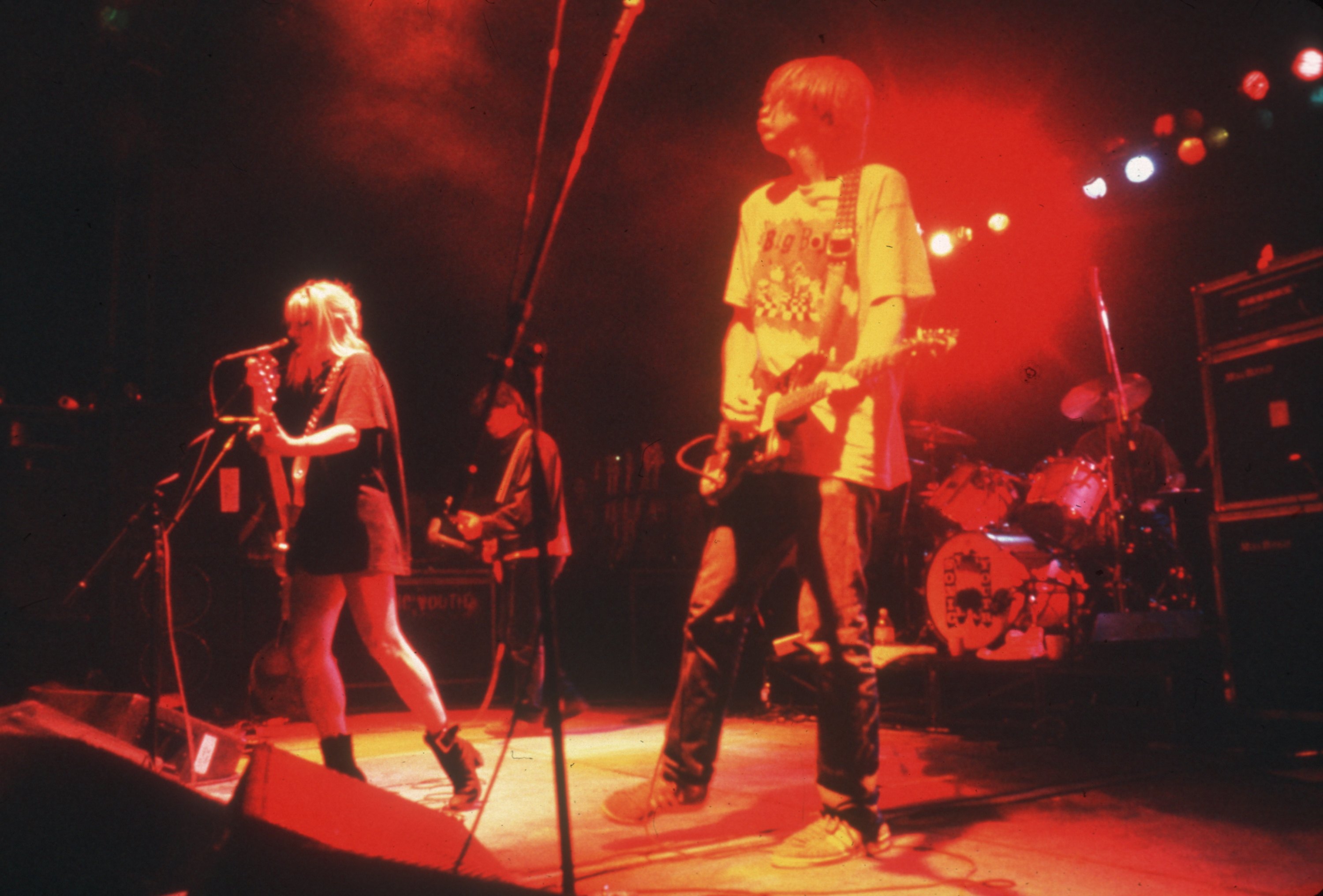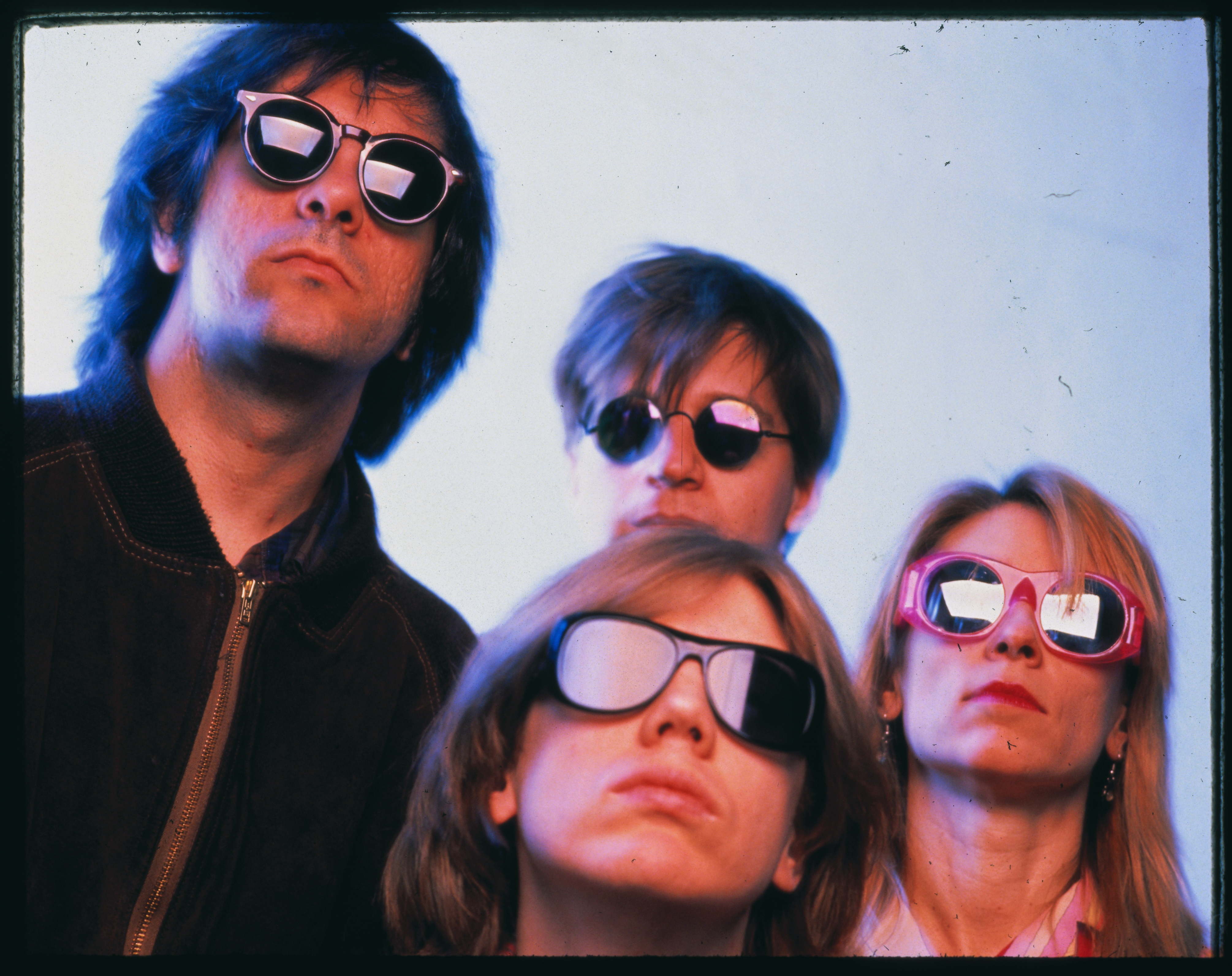THE NEIL YOUNG TOUR
Shelley: I’m the biggest Neil Young fan in the world. [The tour] was a lot of fun, but it was also a weird time for the country, during the first Gulf War. There was also a lot of downtime, because Neil was a little bit older than us, and older guys tend not to want to play four or five nights a week. So we found ourselves with lots of days off in this ugly, late winter period. Neil’s crew were having growing pains of having opening acts because Neil used to never have opening acts. We had to fight to have the sound at the proper volume, so people could actually hear us. So opening for him was a tough gig and in an arena is even tougher. Then again, we got to see Neil Young every night, and he was amazing.
Ranaldo: We played with Neil for three months, and we felt like he was getting wilder and weirder on the solos, and the endings of songs that eventually became Arc. We really felt like he was being influenced by what we were doing. We were on right before him, and he always told us he would be doing his calisthenics under the stage listening to our last song of the set, which had this crazy free-form ending that was different every night.
Moore: We only had about 30 or 40 minutes tops on stage during that tour, and almost a third of our set was extended-drone feedback improvisation at the end of our last song, “Expressway to Yr Skull.” Neil started coming into our dressing room and telling us how these sections at the end of our set were blowing his mind. He would leave his dressing room and stand underneath the arena stage just so he can hear the vibrations.

Also Read
Devon Ross Feels the Noise
Shelley: Thurston suggested that Neil make a record of all these extended endings and I guess light bulbs went off in Neil’s head. And now [Arc] is considered one of his weirdest records in a very strange career.
Moore: One night I said to him, ‘You know what would be really cool is if you took all these endings that you’re doing and make a record out of it.’ And his manager, who was standing there at the time, was looking at me like, ‘Please don’t say that.’ [Laughs.]
 Stephen Malkmus and Kurt Cobain. I was right there, thinking this is incredible. These are the new voices. Both those guys had a certain voice that really galvanized so many young people to just express themselves in a way that wasn’t just a throwaway. It was creative; it was resonant. It was smart. It was also completely open; anti-sexist, anti-racist. Kurt was all that, and Steve showed this proto-intellectual style of songwriting that I just thought was great. They were looking to Sonic Youth as a model for what they were doing as much as anything. And we really prided ourselves on never dumbing down what you do in order to appeal to the radio.
Stephen Malkmus and Kurt Cobain. I was right there, thinking this is incredible. These are the new voices. Both those guys had a certain voice that really galvanized so many young people to just express themselves in a way that wasn’t just a throwaway. It was creative; it was resonant. It was smart. It was also completely open; anti-sexist, anti-racist. Kurt was all that, and Steve showed this proto-intellectual style of songwriting that I just thought was great. They were looking to Sonic Youth as a model for what they were doing as much as anything. And we really prided ourselves on never dumbing down what you do in order to appeal to the radio.
Shelley: Mostly, we were trying to please ourselves. But in certain instances, we were trying to shine a light on certain things we thought other people would enjoy.
Ranaldo: People were surprised at how melodic Sonic Youth can be. That record is full, full of melodies from top to bottom.
Gordon: We weren’t really making music for kids. But one thing I became aware of around Goo and even more so, later into the ’90s and ’00s, was seeing all these young kids in the front. You know, the Internet does work [insofar as] people can discover stuff on their own. It still surprises me to see so many young people in the crowd. All the girls.




